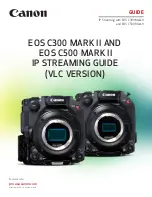
V1.02
Thom Hogan’s Complete Guide to the Nikon D300
Page 673
Autofocus Mode
AF-C* (Continuous Servo)
Autofocus Area Mode
Dynamic Area* or others as needed
The remainder of the settings would either be the same as for
the automatic shooter, or would vary with every situation you
encounter. Again, I’d suggest Aperture-priority exposure mode
(unless you’re shooting sports, in which case I’d suggest
Shutter-priority exposure mode).
The reason you go to NEF and 14-bit for the highest quality is
to try to get every last bit of color capability out of the
camera—to do that you need to shoot raw files and convert
them after the fact in the largest Color Space possible. Using a
measured White Balance (
Preset manual
) is the best way to
get the best color and exposure out of the D300, but if you
know what you’re doing, you can set Kelvin directly.
Dealing with JPEG
If you shoot JPEG with a D300, you need to master the
camera’s digital manipulation settings. In particular, white
balance, contrast, and sharpening settings often determine
how good the final picture is:
• Consider
using
-1
or lower for
Contrast
.
If contrast is set
to
0
, or worse still, one of the higher values, you may
discover that the highlights are blown out and
unrecoverable on your JPEGs (and the shadow areas may
be dark and muddy in color). Some D300 users go further
and suggest the
-3
value as the proper one. If you shoot in
higher contrast scenes then perhaps this is the correct call,
though it’ll mean that you have to post-process your
images more often. The point is: don’t let the camera
make the call (
A
for auto), and set something on the low
side, not the high side.
• Don’t
overexpose!
Coupled with the contrast changes
introduced with the JPEG format is a related issue: any
overexposed area in the resulting shot is very likely to
have blown-out (detail-less) highlights. You’re better off
trying to “recover” information in the shadows on JPEGs
















































